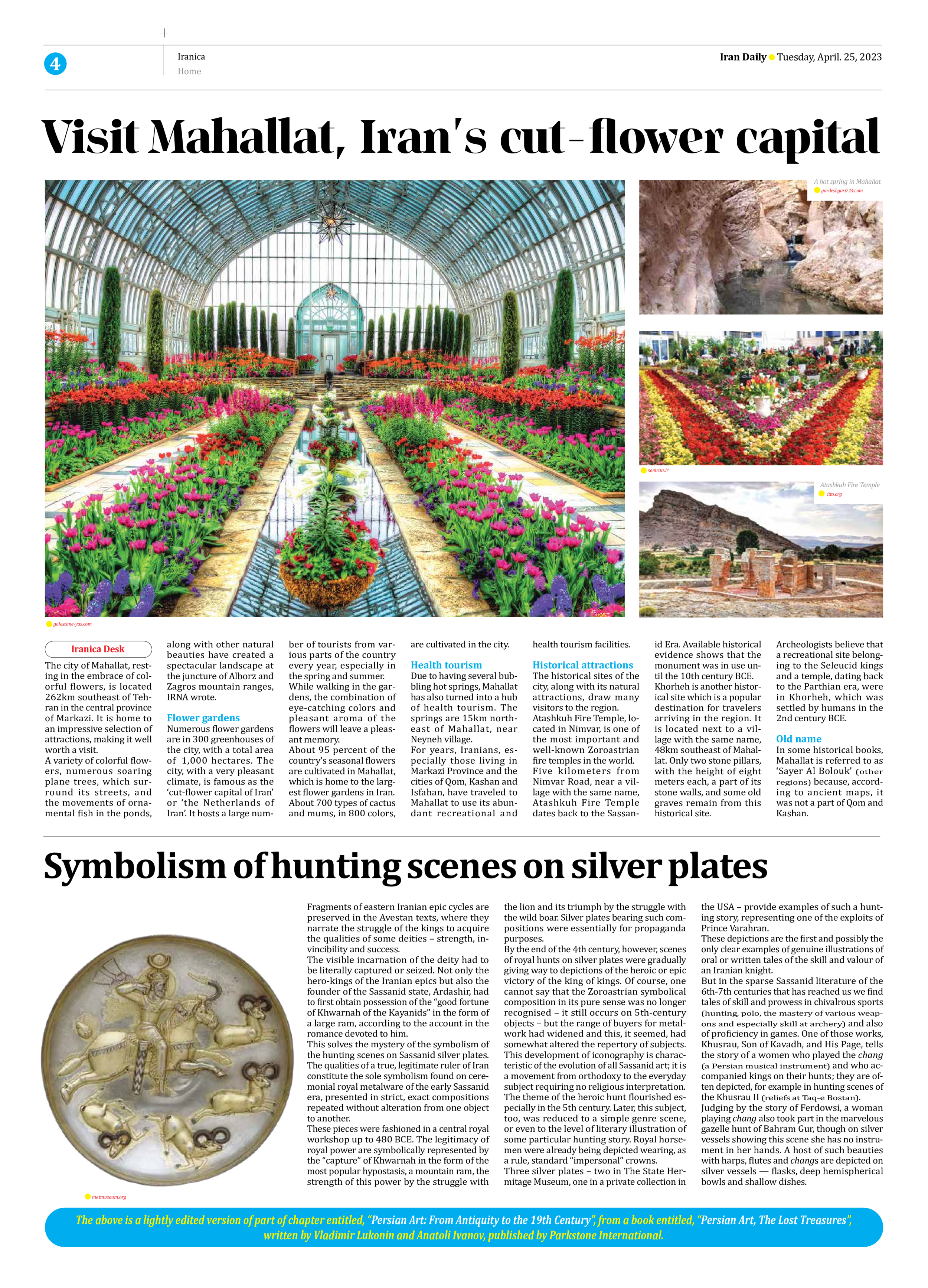
Visit Mahallat, Iran’s cut-flower capital
The city of Mahallat, resting in the embrace of colorful flowers, is located 262km southeast of Tehran in the central province of Markazi. It is home to an impressive selection of attractions, making it well worth a visit.
A variety of colorful flowers, numerous soaring plane trees, which surround its streets, and the movements of ornamental fish in the ponds, along with other natural beauties have created a spectacular landscape at the juncture of Alborz and Zagros mountain ranges, IRNA wrote.
Flower gardens
Numerous flower gardens are in 300 greenhouses of the city, with a total area of 1,000 hectares. The city, with a very pleasant climate, is famous as the ‘cut-flower capital of Iran’ or ‘the Netherlands of Iran’. It hosts a large number of tourists from various parts of the country every year, especially in the spring and summer.
While walking in the gardens, the combination of eye-catching colors and pleasant aroma of the flowers will leave a pleasant memory.
About 95 percent of the country’s seasonal flowers are cultivated in Mahallat, which is home to the largest flower gardens in Iran.
About 700 types of cactus and mums, in 800 colors, are cultivated in the city.
Health tourism
Due to having several bubbling hot springs, Mahallat has also turned into a hub of health tourism. The springs are 15km northeast of Mahallat, near Neyneh village.
For years, Iranians, especially those living in Markazi Province and the cities of Qom, Kashan and Isfahan, have traveled to Mahallat to use its abundant recreational and health tourism facilities.
Historical attractions
The historical sites of the city, along with its natural attractions, draw many visitors to the region.
Atashkuh Fire Temple, located in Nimvar, is one of the most important and well-known Zoroastrian fire temples in the world.
Five kilometers from Nimvar Road, near a village with the same name, Atashkuh Fire Temple dates back to the Sassanid Era. Available historical evidence shows that the monument was in use until the 10th century BCE.
Khorheh is another historical site which is a popular destination for travelers arriving in the region. It is located next to a village with the same name, 48km southeast of Mahallat. Only two stone pillars, with the height of eight meters each, a part of its stone walls, and some old graves remain from this historical site.
Archeologists believe that a recreational site belonging to the Seleucid kings and a temple, dating back to the Parthian era, were in Khorheh, which was settled by humans in the 2nd century BCE.
Old name
In some historical books, Mahallat is referred to as ‘Sayer Al Bolouk’ (other regions) because, according to ancient maps, it was not a part of Qom and Kashan.







